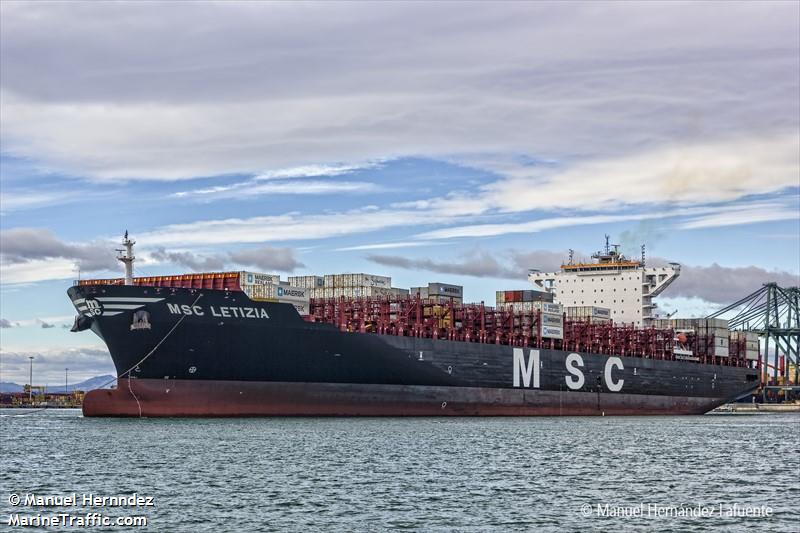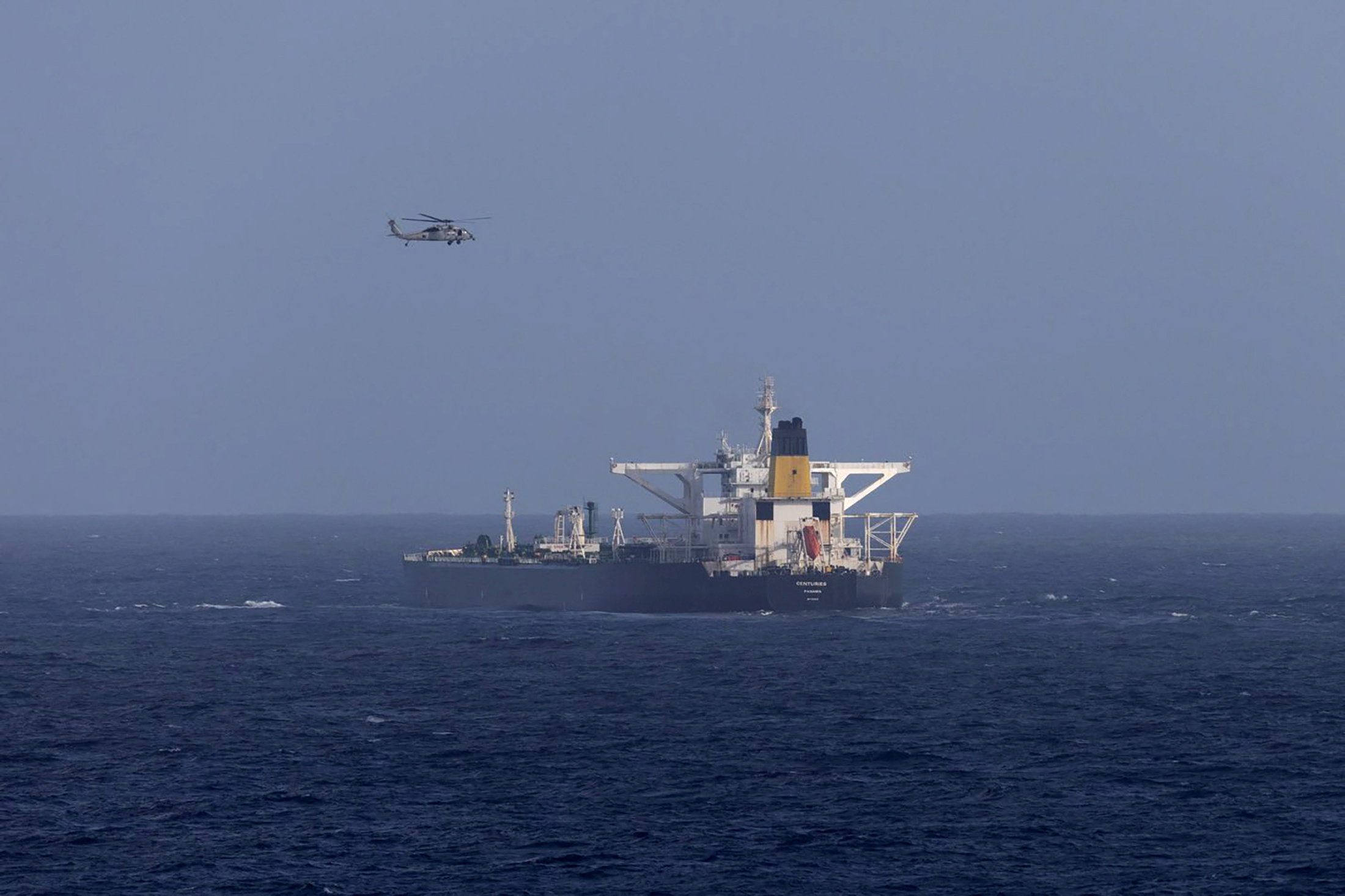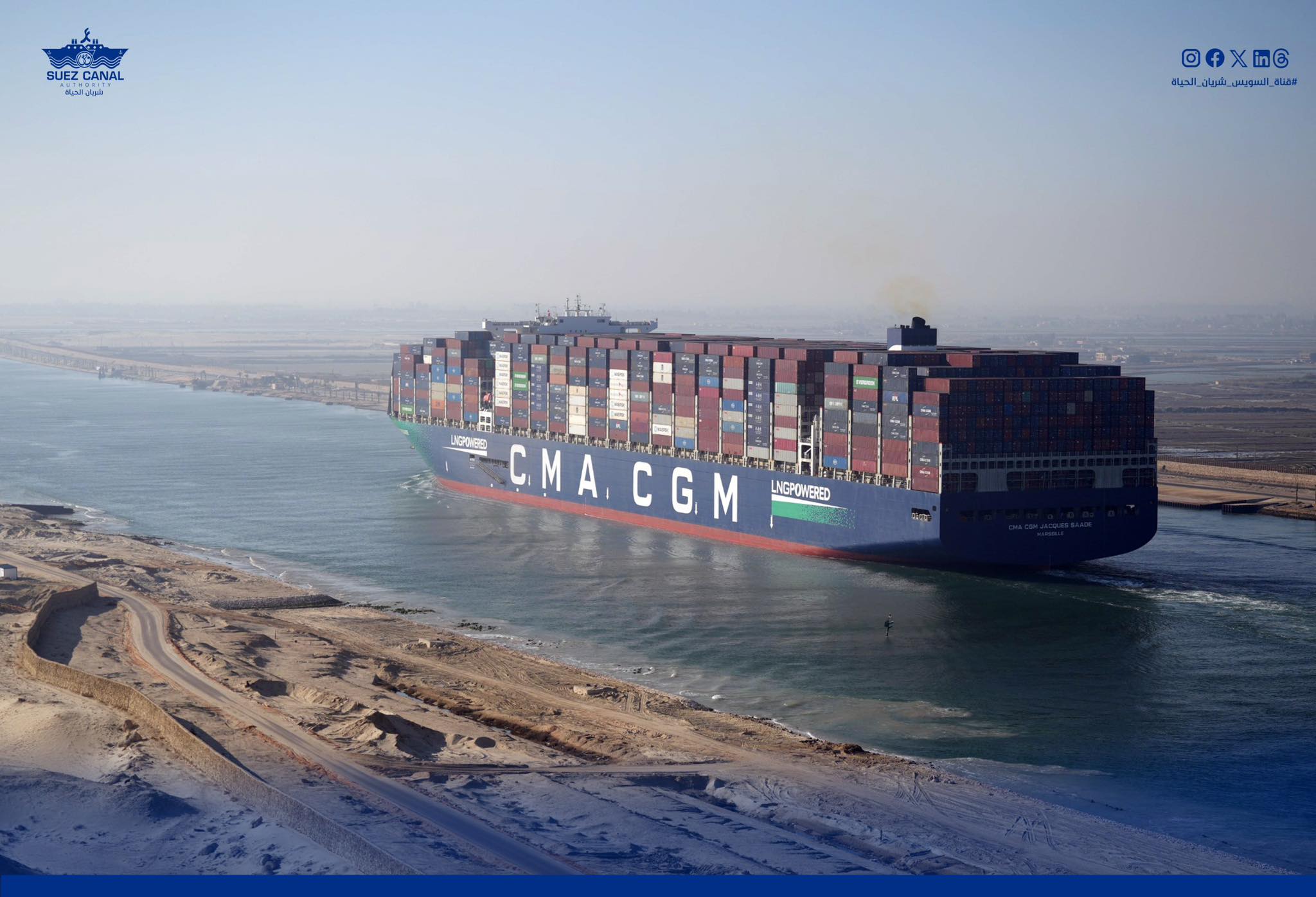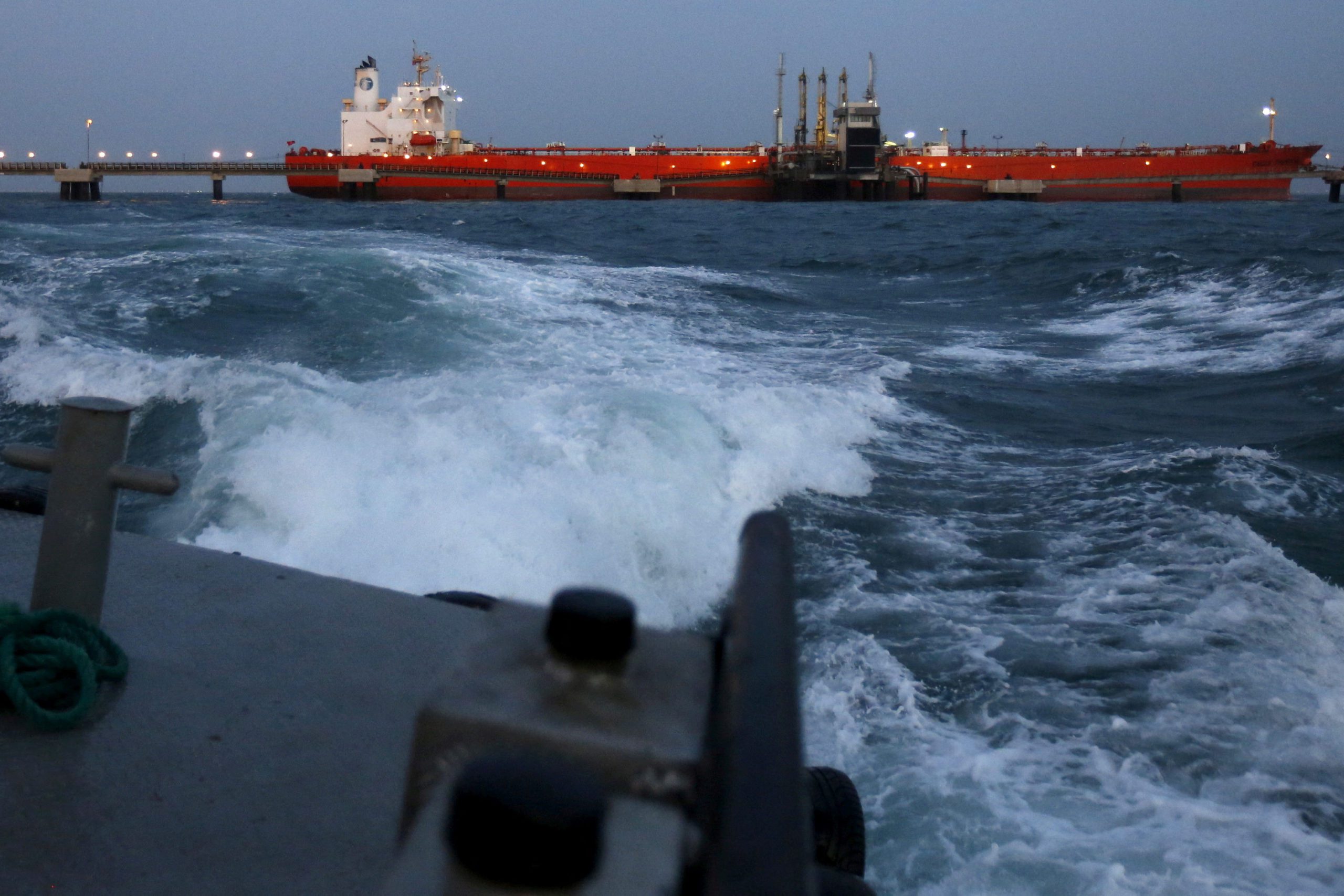MSC Letizia. Photo: MarineTraffic.com/Manuel Hernandez
By Isis Almeida and Suzi Ring
(Bloomberg) — The MSC Letizia, a container ship, set sail from Santos Port bearing familiar bounties of Brazil such as sugar and coffee.
But nesting amidships that Friday last June was one container, MEDU3333950, that would carry a different kind of cargo all the way to East Africa.
Its secret load: 200 pounds of cocaine.
The story of MEDU3333950 might have ended there, with a quick seizure by local authorities or an unremarkable arrest, except for this: it has now entangled a young Brit of noble birth and a storied London commodities house in a web of global trade and illicit drugs.
More, the roundabout journey those drugs apparently took has trained a harsh spotlight on an open secret in the commodities game: increasingly, smugglers are using industry shipping networks to spirit contraband around the world.
The unlikely figure at the center of all this is Jack Alexander Wolf Marrian, grandson of the Sixth Earl of Cawdor. His clan’s ancestral Scottish home, Cawdor Castle, is best perhaps known as the Highlands redoubt of Shakespeare’s Macbeth. (In truth, the castle was built in the late 14th Century, 300 years after the real Macbeth was crowned king).
Today Marrian, 31, stands accused of smuggling the load of cocaine into the Kenyan port city of Mombasa. Prosecutors allege his connection to MEDU3333950 is clear: the container was part of a shipment to a Kenyan importer where Marrian, a top sugar trader for ED&F Man, serves as a managing director.
Marrian and ED&F Man, which traces its history back to the 18th Century, have vigorously denied any wrongdoing. Jascha Raadtgever, Marrian’s boss, said the firm is “confident that Jack will be fully exonerated and justice will be done.” His trial is set to open on Monday at Kibera court in Nairobi, and the stakes couldn’t be higher: if convicted, Marrian could face life in prison.
Speaking by telephone this week from Nairobi where he is free on $1.4 million bail, Marrian, trying to sound upbeat, again proclaimed his innocence and said he was busily preparing for his trial.
“I can’t wait to get back to work,” Marrian said. “That is what I really look forward to.”
It’s been a remarkable turn of events for Marrian, who moved to Kenya at age five and grew up in the comfortable surroundings of blue-blooded British expatriates.
His mother, Lady Emma Clare Campbell, runs an upscale interior design firm in Nairobi; his father, David Marrian, is a painter. Young Jack attended one of Kenya’s foremost international schools with Crista Cullen, 2016 Olympic gold hockey champion, and later Marlborough College, the prestigious British boarding school, where he was three years behind Kate Middleton, now the Duchess of Cambridge.
Santos Port
Then, on July 29, seven weeks after MEDU3333950 had left Santos Port, Marrian’s life was sent reeling. He was out to dinner when a friend called with startling news: local media were reporting that his firm was connected to a massive shipment of cocaine into Mombasa. He was dumbfounded.
Twenty-four hours later, Marrian was roused from his bed by 20 plain-clothes police officers. He spent three weeks in prison before being freed on bail. Calls and e-mails to spokespeople for the Kenyan authorities went unanswered. Roy Mwanthi, a Kenyan clearing agent used by ED&F Man, was also arrested and professes his innocence. He will stand trial with Marrian.
Behind all the drama is that one container, MEDU3333950. Its circuitous route from Brazil to east Africa — over the Atlantic, across the Mediterranean, through the Suez Canal, around the Horn of Africa — leaves a crucial question hanging: how did a major commodities house get swept up in all of this?
As strange as the story might sound, commodities traders say they’ve heard many like it before. Industry insiders say shipping containers are often tampered with en route, despite efforts to watch over their packing, sealing and loading. In commodities circles, tales of illicit cargo can be regaled by most.
‘Rip-Off Modality’
Containers are interfered with so often, in fact, that law enforcement has a term for legitimate shipments that are exploited by smugglers: rip-offs. Cargo is said to be in “rip-off modality” when neither the shipper nor the consignee is aware the shipment is being used for illicit products.
Jonathan Drake, former head of sugar at the commodities giant Cargill Inc., says he’s never knowingly dealt with rip-offs involving illegal drugs. But he’s seen containers tampered with during shipment.
“I’ve had goods disappear from containers under customs supervisions in African countries while the seal remained intact, which completely baffled us,” says Drake, now chief operating officer at RCMA Commodities Asia Pte Ltd. “The containers were half empty.”
Spare Seal
From Santos Port, MEDU3333950 traveled first to Valencia, Spain. There, U.S. authorities say, smugglers tried to extract the cocaine inside. Before Spanish police could intervene, however, the container left for its next stop: Oman. Spanish officials and the U.S. Drug Enforcement Agency suspected MEDU3333950 was a rip-off load and alerted authorities in Kenya, the container’s next destination, who found a spare seal inside.
“The Spanish stressed this was a rip-off load and the recipient of the container would have no knowledge it was being used to transport drugs,” DEA spokesman Melvin Patterson said this week, reiterating a previous statement from the agency.
Contraband — particularly drugs — has turned up in a number of commodity shipments this year. At least two other international commodity traders have had containers carrying sugar from Brazil arrive in Sri Lanka with cocaine. In August, workers at a Coca-Cola Co. factory in France discovered cocaine in a container of orange juice from Costa Rica.
Reputation Risk
Ketil Ottersen, head of the Global Container Control Programme at the United Nations Office on Drugs and Crime, says smuggling often goes unreported.
“Some companies that fall victim to this don’t want to step forward because they are afraid of damaging the reputation of their market and making clients concerned,” Ottersen says. “From the point of view of a private company, if their containers were used at some point in a journey to transport drugs but their goods are all there at the end and their client is happy, they may say, ‘What can we do?’ ”
Santos Port in Brazil, where MEDU3333950 began its journey, has seen a big increase in cocaine trafficking lately. So far this year, more than six tons of cocaine have been seized there — six times the amount in all of 2015, according to Brazilian customs data. Most of that cocaine was headed for Europe.
Smuggling has become such a problem in Brazil that customs decided to enforce scanning of all containers heading or passing through Europe starting this April. ED&F Man’s shipment was scanned but the drugs weren’t detected, according to a person familiar with the matter. Brazilian customs declined to comment.
Back in Nairobi, Marrian is trying to keep up his spirits. Given his lineage, not to mention the 200 pounds of coke, his case has drawn headlines in Britain. Marrian, however, says he’s no aristocrat, just a hard-working sugar trader. He’s only visited Cawdor Castle once, as an ordinary tourist.
But he readily admits something like this would test anyone’s mettle. “It was the equivalent of being struck by lightning, so sudden and unexpected,” he says. “I am still reeling from the shock.”
© 2016 Bloomberg L.P

 Join The Club
Join The Club











